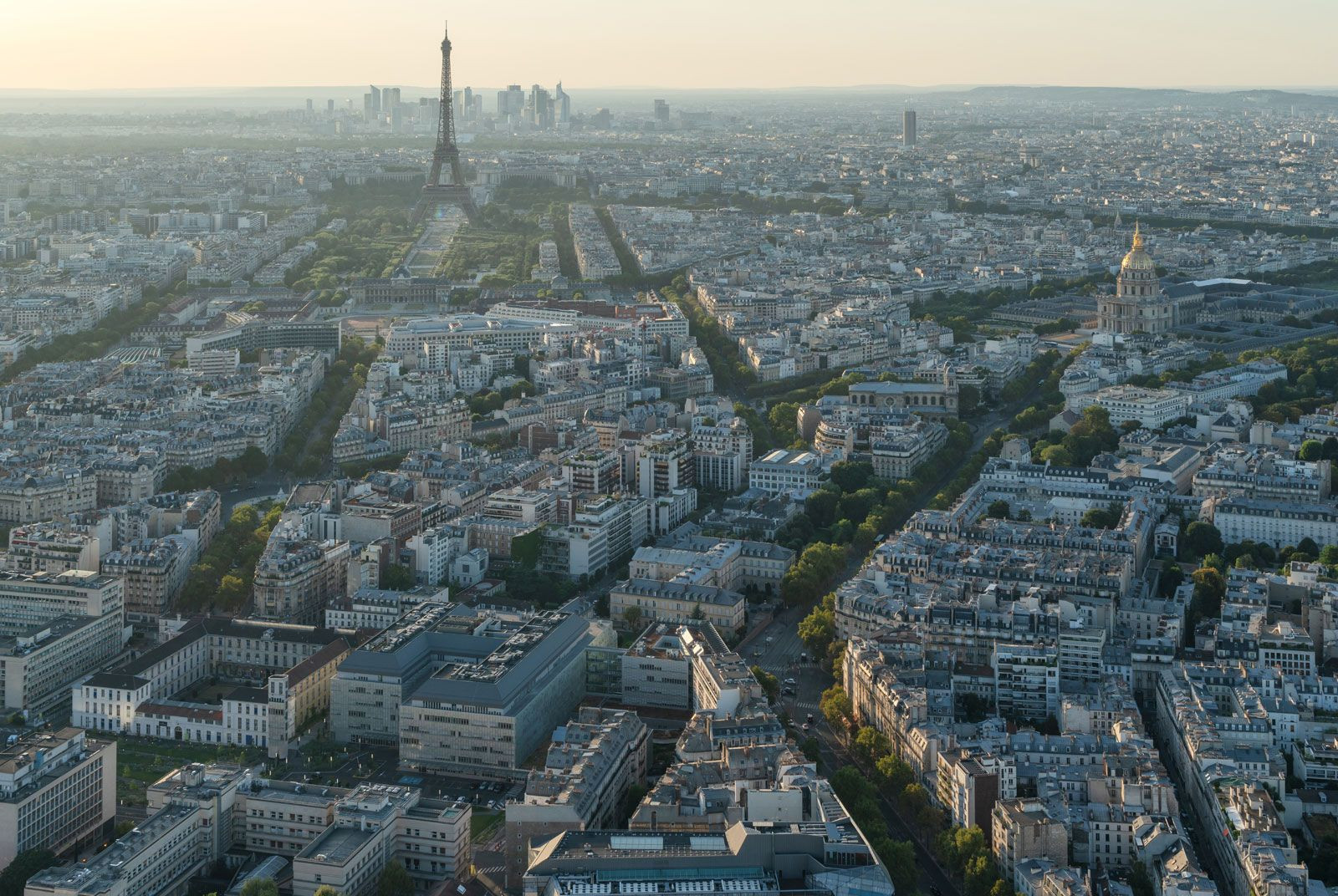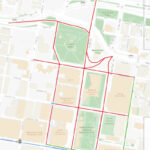Paris, the illustrious capital of France, is a city synonymous with romance, history, and culture. Before exploring its iconic landmarks and vibrant streets, understanding its geographical position is key to appreciating its strategic importance and unique character. So, Where Is Paris Located In France? Let’s delve into the precise location of this global metropolis.
Paris is situated in the north-central part of France. More specifically, it graces the banks of the Seine River, approximately 233 miles (375 kilometers) upstream from where the river meets the English Channel (La Manche). Positioned at the heart of the Île-de-France region, Paris serves as the central point of this historically and economically significant area. Its location within the Paris Basin, a rich agricultural region, has also contributed to its growth and prominence throughout history.
 Paris skyline featuring the Eiffel Tower and surrounding buildings
Paris skyline featuring the Eiffel Tower and surrounding buildings
Geographical Location of Paris: Heart of Île-de-France
To pinpoint the exact location of Paris in France, it’s essential to understand its regional context. Paris is not just a city; it’s also one of the eight départements that comprise the Île-de-France administrative region. This region, whose name translates to “Isle of France,” is aptly named due to its river-bounded geography and historical significance as the core of the French kingdom. Paris, at its center, acts as the undisputed nucleus of this region, both geographically and administratively.
Being in north-central France places Paris in a temperate climate zone, experiencing distinct seasons. This geographical positioning also historically facilitated its role as a crucial crossroads for trade and transportation routes, connecting northern and southern Europe via land and waterways. The Seine River, flowing through Paris, has been a lifeline for the city, enabling commerce and shaping its urban development.
Paris Within France: A Central Hub
France is a nation known for its centralized governance, and Paris epitomizes this characteristic. As the capital city, Paris is the undeniable political, economic, and cultural center of France. Its central location within the country has naturally fostered this dominant role. Talent, resources, and infrastructure converge in Paris, making it a vibrant and dynamic metropolis that significantly influences the entire nation.
Historically, this central position allowed Paris to consolidate power and influence. From its early designation as the capital of the Parisii tribe under Roman rule to its establishment as the Frankish capital by Clovis I, Paris’s geographical advantage contributed to its continuous growth and importance. This centrality persists in modern France, where Paris remains the primary magnet for business, education, and cultural innovation.
Landscape and City Site: Shaped by the Seine
The city site of Paris is uniquely defined by the Seine River. The river effectively divides the historical city into three main parts. At its heart lies the Île de la Cité, the island which represents the ancient core of Paris and the seat of both religious and temporal power. To the south of the Seine is the Left Bank (Rive Gauche), traditionally known as the intellectual and artistic quarter. To the north is the Right Bank (Rive Droite), historically the center of commerce and economic activity, though these distinctions have become more nuanced over time.
Paris occupies a depression carved out by the Seine. While the city center is relatively low-lying, the surrounding areas rise to varying elevations. Montmartre, in the north, stands at approximately 430 feet (130 meters), offering panoramic views, while the Grenelle area in the southwest is considerably lower at about 85 feet (26 meters). This gentle topography contributes to the city’s charming and varied urban landscape. Furthermore, the “lungs of Paris,” vast forests of beech and oak surrounding the city, play a vital role in air purification within this industrialized region, underscoring the importance of the city’s natural setting.
 Map of Paris and surrounding metropolitan area
Map of Paris and surrounding metropolitan area
Orientation within Paris: Navigating the City of Lights
Understanding where Paris is located also involves grasping its internal orientation. The Seine River serves as a constant reference point, with Parisians commonly using “Right Bank” and “Left Bank” to describe locations relative to the river’s flow. For finer navigation, Paris is divided into 20 arrondissements, or municipal districts, arranged in a clockwise spiral starting from the city center. This unique numbering system provides an intuitive way to locate different neighborhoods and landmarks within the city.
Key landmarks further aid in orientation. Notre-Dame Cathedral, situated on the Île de la Cité, is often considered the symbolic heart of Paris and a central point of reference. From there, iconic structures like the Eiffel Tower, Montmartre, and the Louvre Museum provide further anchors for navigating this sprawling metropolis. The city’s radial layout, with boulevards emanating from central points, also contributes to its navigable structure.
Conclusion: Paris’s Strategic and Symbolic Location
In conclusion, Paris is located in the north-central region of France, nestled within the Île-de-France and gracefully positioned along the Seine River. This geographical placement has been instrumental in shaping Paris’s history, economy, and culture, solidifying its status as a global capital. From its strategic location in the heart of France and Europe to its intimate relationship with the Seine, Paris’s geographical identity is inextricably linked to its enduring allure and global significance. Understanding where Paris is located in France is the first step in appreciating the depth and richness of this extraordinary city.


